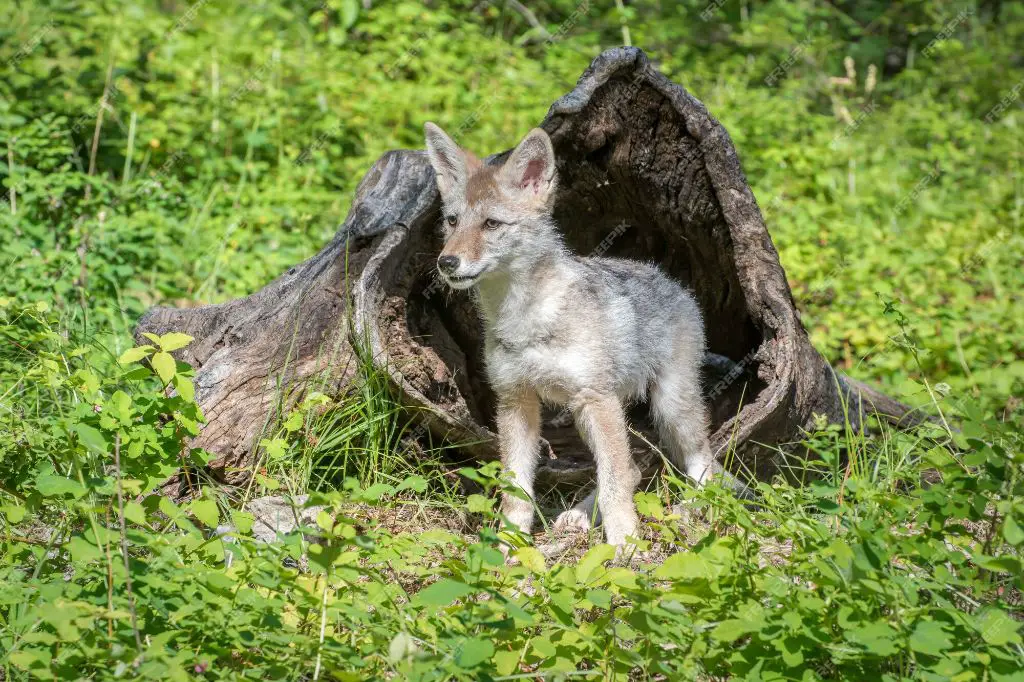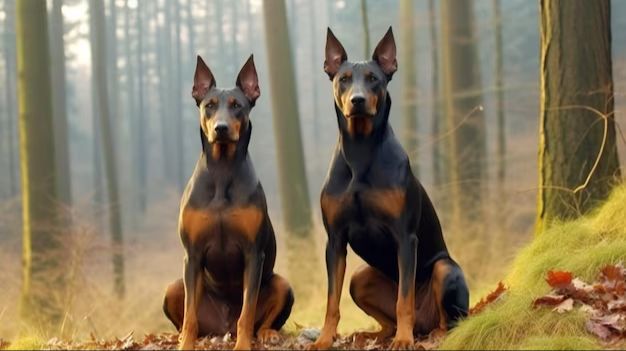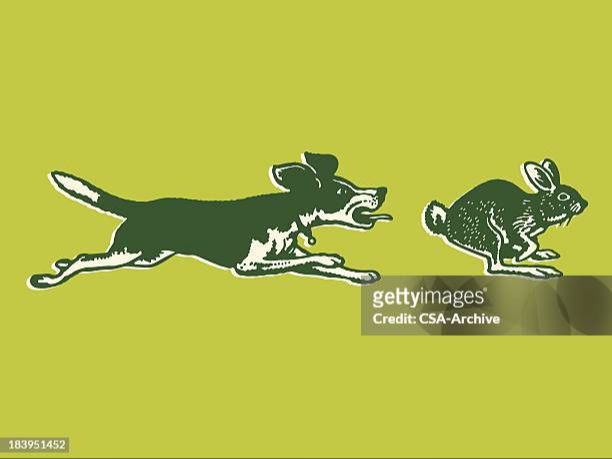Introduction
There has been much confusion and debate over whether coyotes and dogs can interbreed and produce viable offspring. This controversy exists because coydogs, the hybrid of a dog and coyote, possess physical and behavioral traits of both parent species. The conflicting accounts of coydog breeding likely stem from the biological similarities and differences between coyotes and domesticated dogs.
Coyotes and dogs share a nearly identical genetic makeup and both are members of the dog family Canidae. Their shared genetics allow for cross-breeding and conception. However, some scientific sources argue coyote-dog breeding does not commonly occur for various biological reasons. Despite the debate, there is documented evidence of coydogs born from crossing wild coyotes with domestic dogs.
This article will provide an overview of coyotes, dogs, and their hybrid offspring. We will analyze the reproductive compatibility between the two species and examine reported cases of coydogs. Additionally, we will explore the controversy around coydog breeding and look at how to identify a coydog hybrid.
Coyote Basics
Coyotes are canids native to North America and inhabit most of the continent, with their range extending from Alaska to Central America. Highly adaptable, they can be found in diverse environments including prairies, forests, mountain regions, and even urban areas.
In terms of physical features, coyotes resemble a small German shepherd in size and build. They have tawny fur, a bushy tail often carried low when relaxed or down when moving slowly, and large pointed ears that stand erect. Adult coyotes typically reach 18-34 pounds in weight. Their slender, light frame allows them to run up to 40 miles per hour and leap distances over 13 feet.
Coyotes are most active at night or during dusk and dawn. They are opportunistic predators whose diet consists of small mammals like rats, voles and mice as well as birds, reptiles, fruit and insects. They are intelligent and curious animals that live both solo and in packs. Their group communication includes various howls, yips and barks. Coyotes mate once a year, producing litters of 5-7 pups on average.
Dog Basics
Domestic dogs (Canis lupus familiaris) are one of the most popular pets and widely kept working animals. There are more than 300 recognized dog breeds that have a range of appearances and specialized jobs. Despite this diversity, all domestic dogs have similar biology and behavior due to being the same species.

Physically, most dogs have athletic bodies with long muzzles, pointed ears, and tails that curl upward. Their coats come in many colors and patterns including brown, black, white, red and mixed. Dogs are digitigrade, standing on their toes. They haveHeight typically ranges from 9 to 80 pounds depending on the breed.
Behaviorally, dogs are highly social, loyal pack animals. They communicate through body language, barks and other vocalizations. Most dogs are very playful, especially as puppies. With training, dogs can follow human commands and assist with hunting, herding, pulling sleds and more. However some behavioral issues like barking, digging and chewing can arise without proper training and exercise.
Reproductive Compatibility
When considering whether coyotes and dogs can mate and produce offspring, an important factor is their reproductive compatibility. Coyotes and dogs are quite closely related biologically, belonging to the same family (Canidae) and genus (Canis). They share similar reproductive anatomy and hormones.
The key question is whether their genetic makeup is similar enough to allow for viable, fertile hybrids. Scientists have confirmed that coyotes and dogs are close enough genetically to successfully interbreed and produce live offspring, known as coydogs. While any two members of the same genus may be able to mate, this does not always result in living or fertile offspring, due to chromosomal mismatching.
Coyotes and dogs, however, have 78 chromosomes that can pair up, compared to coyotes and wolves having 78 and 76 respectively. This difference in chromosome count makes coywolf hybrid offspring less viable. The genetic likeness between coyotes and dogs allows their hybrids to be born healthy and possess undiminished fertility.
Documented Coydog Breeding
Although interbreeding between coyotes and domestic dogs is biologically possible, recorded cases have been infrequent throughout history. Early Spanish colonists in the Americas mentioned coyote-dog hybrids in their writings as early as the 1750s. Most documentation has occurred in the last century as coyote populations increased and expanded into areas with greater interaction with domestic dogs.
In urban and suburban areas, the rise in stray and feral dogs has increased the likelihood of hybridization. Several cases of coydog breeding have been confirmed through genetic testing of animals caught or killed in such environments. Most occur between male coyotes and female domestic dogs in heat, as male dogs are more likely to be neutered while coyotes remain sexually intact.
Intentional cross-breeding by breeders has occurred but remains rare. Documented instances include breeders seeking to develop coydog breeds by crossing German Shepherds, Huskies, and other dogs with coyotes. Some breeders claim hybrid vigor gives coydogs an advantage as working dogs for tasks such as hunting or guarding livestock.
Overall, confirmed modern cases of coydog hybrids represent a small percentage of the coyote and domestic dog populations. Yet their existence demonstrates that successful breeding between the species continues to occur.
Coydog Characteristics
Coydogs can have a varied mix of physical traits from their coyote and dog parents. Their size, coloring, and fur length are highly variable depending on breeding. Some distinctive physical features include:
- Long, dense coats that shed minimally, like coyotes
- Thick undercoats adapted for cold weather
- Pointed, triangular ears like coyotes
- Long legs and a narrow, athletic build
- A coyote-like jaw and snout

Behaviorally, coydogs tend to be timid and shy with strangers like coyotes. However, around family they can be very affectionate and loyal like dogs. Coydogs may display dog and coyote traits like:
- Extreme wariness around new people
- Hypersensitivity to loud noises and quick movements
- A strong prey drive and desire to roam and explore
- A very protective nature and affinity for “pack” bonding
- Intelligence and cunning tendencies

Their temperament can vary significantly depending on genetics, socialization, and training. Responsible coydog owners need to be prepared for a mix of wild coyote instincts and domesticated dog behaviors.
Legality and Controversy of Coydogs
Coydog breeding and ownership is controversial and regulated in certain areas. Some states, such as New York, have banned the breeding and possession of coydogs as hybrid canines. Other areas may require permits and licenses for owning a coydog. Additionally, some counties and municipalities have enacted coydog regulation through local ordinances.
There are ethical concerns regarding purposeful coydog breeding as well. Critics view the practice as irresponsible since coydogs may pose risks to communities if they escape or are released. Coydogs could potentially threaten livestock or small pets. There are also worries about coydogs impacting natural ecosystems if they breed with coyotes or domestic dogs. Due to these concerns, wildlife experts typically recommend against breeding coydogs.
However, regulation and bans are difficult to enforce. Coydogs often look very similar to domestic dogs, making identification challenging for officials. There are also accidental breedings between coyotes and dogs when the two interact. While controversial, coydog breeding still occurs, and owners are able to bypass regulation in many areas.
Coydog Identification
Distinguishing coydogs from dogs or coyotes can be challenging. Coydogs often have physical and behavioral characteristics of both parent species. Some ways to identify coydogs include:
– Size: Coydogs tend to be larger than coyotes but smaller than most dog breeds. They typically weigh between 35-55 pounds.
– Coloration: Coydogs may have multi-colored fur with mottled patches of brown, tan, or red. Their fur is often thicker than a coyote’s but less uniform than a dog’s.
– Facial features: Coydogs tend to have a narrower muzzle, more pointed ears, and a less domed forehead than most dogs.
– Bushy tail: Coydogs usually have a bushy, downward-drooping tail similar to coyotes.
– Vocalizations: Coydogs are often more “talkative” than coyotes and may yip, bark, or howl more like domesticated dogs.
– Behavior: Coydogs are typically shyer and warier of humans than dogs but may be more socialized than coyotes. They often exhibit a mix of dog and coyote mannerisms.
– Genetic testing: DNA tests can identify coyote markers in an animal suspected to be a coydog.
Coydog Risks
There are many risks and concerns associated with coydogs, especially regarding their behavior and temperament. While some argue that coydogs make good pets, they tend to be more unpredictable and aggressive than dogs. This is due to the wild nature of coyotes.

Coydogs typically have strong prey drives inherited from their coyote parent. This makes them prone to chasing and killing small animals such as cats, rabbits, or other pets. Even well-socialized coydogs may attack a household pet if triggered by their prey drive instincts.
Coydogs are also known to be quite skittish and timid around humans, especially strangers. They are naturally wary and suspicious, which can lead to fear-based aggression if not properly socialized. A lack of early socialization with people contributes to coydogs becoming fearful biters.
Additionally, coydogs tend to be more territorial than domesticated dogs. They vigorously protect their perceived territory and resources. This territorial nature increases the chances of a coydog biting or attacking an intruder, even a family member.
Since coydogs have a high prey drive and are notoriously difficult to train, they require experienced owners familiar with wild canids. They need intense socialization from an early age. Without proper handling, coydogs pose risks as potential biters and attackers.
Conclusion
Coydogs are hybrids between domestic dogs and coyotes that occur both intentionally, from breeding programs, and unintentionally in the wild. While coyotes and domestic dogs share an evolutionary link as canids and can interbreed, the offspring inherit a mix of traits that can pose risks as well as benefits.
Coydogs tend to be difficult to fully domesticate and socialize with humans due to their instincts to roam, hunt, and avoid humans. However, with concerted and professional training some coydogs can be kept as pets. The legality of owning coydogs varies widely between regions, and they are illegal in many areas due to concerns over predation of wildlife and livestock. Those wanting to own a coydog should be prepared to provide significant space, containment, exercise, stimulation and training.
Looking ahead, intentional breeding of coydogs for pets is unlikely to grow due to the challenges of properly containing and caring for these hybrids. However, accidental mating between coyotes and dogs may continue in areas where expanding coyote populations overlap with domestic dog populations. It remains to be seen if this interbreeding will affect the genetics and traits of wild coyote populations over time.